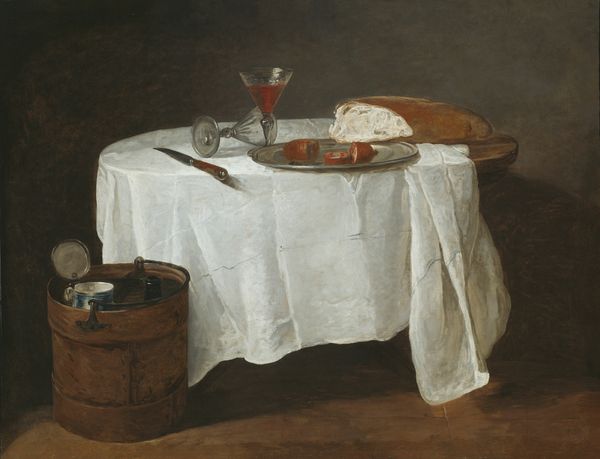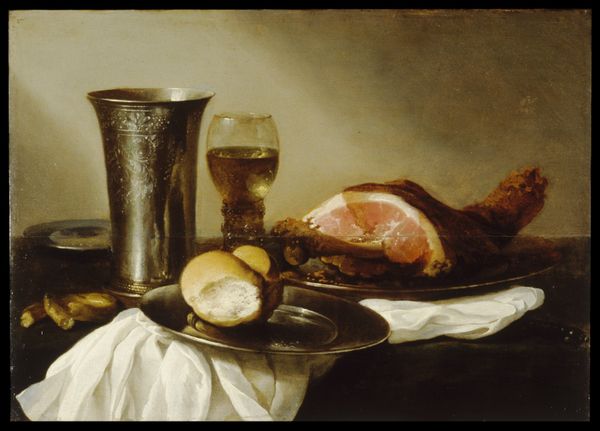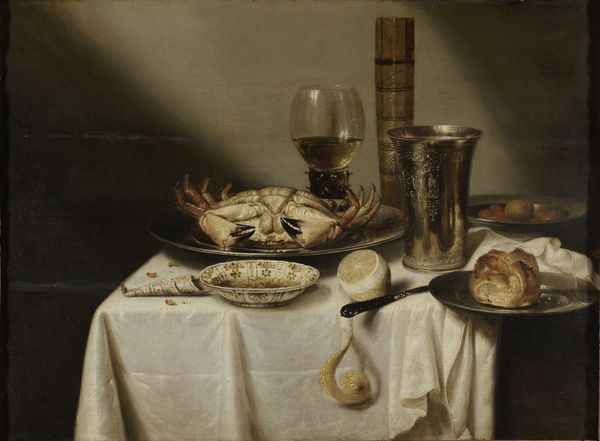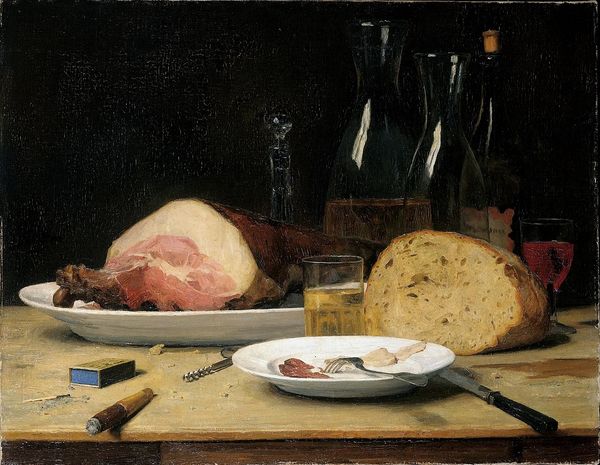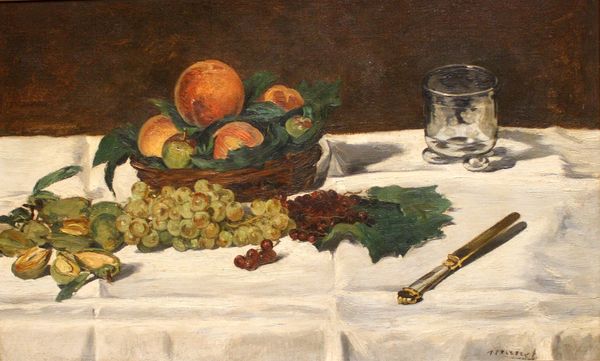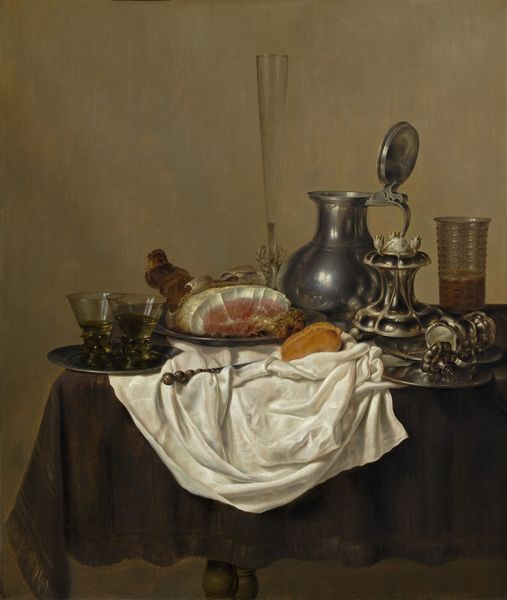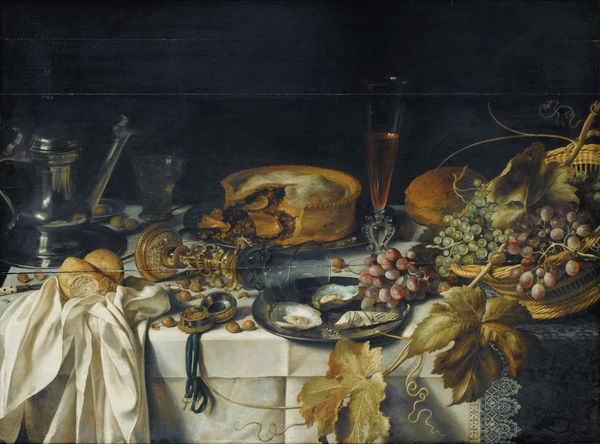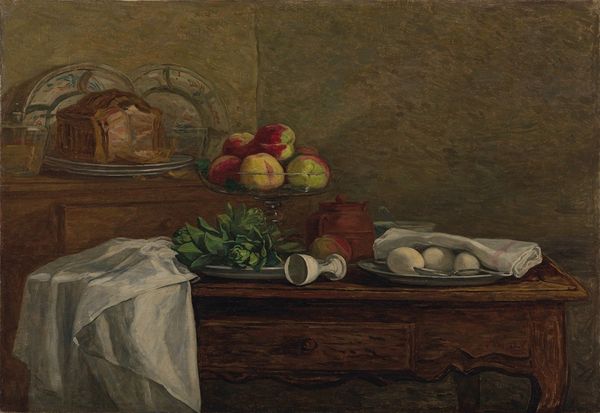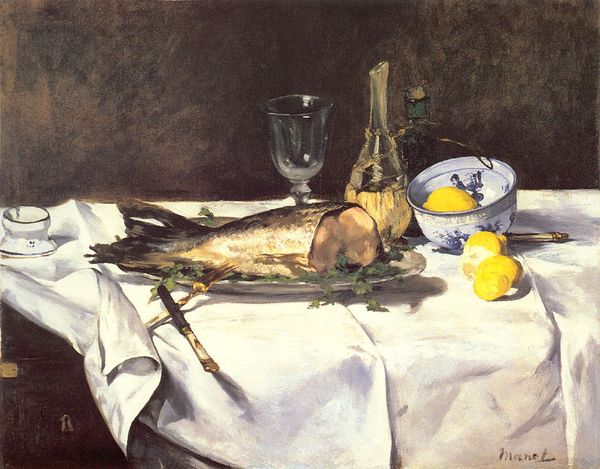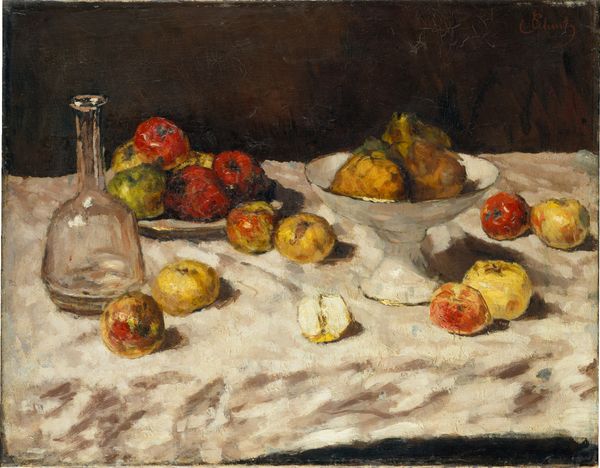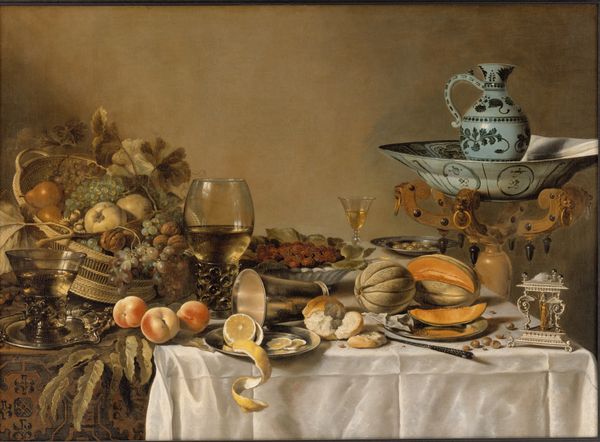
oil-paint
#
oil-paint
#
oil painting
#
genre-painting
#
academic-art
#
realism
Dimensions: 28 3/4 x 36 1/4 in. (73 x 92.1 cm)
Copyright: Public Domain
Curator: Welcome. Here we have Philippe Rousseau's "Still Life with Ham," dating to the 1870s. Editor: It strikes me as immediately opulent and…well, slightly unsettling. The ham dominates everything, doesn't it? It is massive and frankly, a bit grotesque in its fleshy realism. Curator: It does command attention. Realism, a popular style in the 19th century, sought to portray life authentically. However, if we situate this work within the context of French society during the 1870s—a period marked by post-war anxieties—one could argue that this seemingly celebratory abundance actually signifies more complex concerns. The ham, arguably, symbolizes the bourgeoisie's relentless pursuit of pleasure and material wealth, against a background of socioeconomic inequality. Editor: I see that tension too. Look at how Rousseau stages everything. The newspaper with bold black lettering folded there near a crumpled piece of paper on a saucer… and the silver chalice all speak to specific cultural touchstones of wealth, formality, the domestic sphere and memory. The leaves placed in the back could easily symbolize something—say renewal?--although given what it frames here, it's hard to say. Curator: Absolutely. Let's also think about class and labor. This meal isn't presented in the throes of being consumed; it has been artfully posed. So it invites critical inquiry: Who would eat it? Who has provided it, and under what conditions? This raises complex issues surrounding food culture, consumption, and representation that art like this inevitably embodies. Editor: And all the glassware: It looks very formal, like someone prepared a meal they meant to show off for. As if this is more a depiction of success and plenty than… sustenance. Look how sharply Rousseau contrasts the clear bottle on the left with the darkly colored glass bottles clustered in the painting’s upper right; how he arranges their placement creates the balance between the foreground and background, a very formal visual staging. Curator: Agreed. In its seemingly straightforward depiction of material goods, Rousseau subtly provokes us to reflect critically about socioeconomic power structures. Editor: Overall, considering the symbols arranged here, and the skill Rousseau uses to bring those symbols into play, it shows you don’t need to be human to speak. “Still Life with Ham” actually communicates a complex historical narrative—beyond merely depicting things. Curator: Indeed, by attending to both its art-historical context and contemporary critical theory, one can see this still life operates not just as an object to behold, but to interrogate, a key visual expression of a particular time, and of its anxieties.
Comments
No comments
Be the first to comment and join the conversation on the ultimate creative platform.

